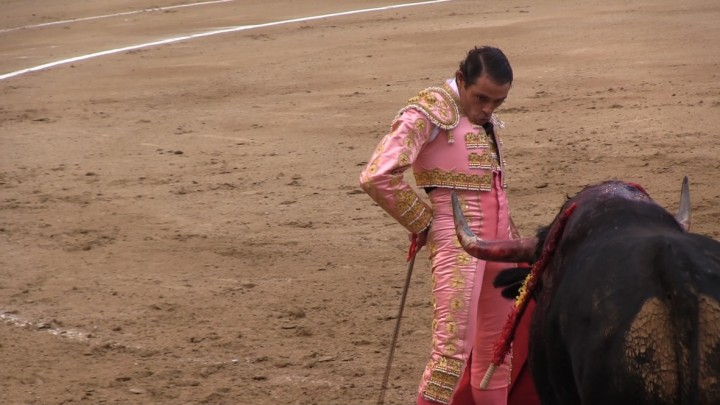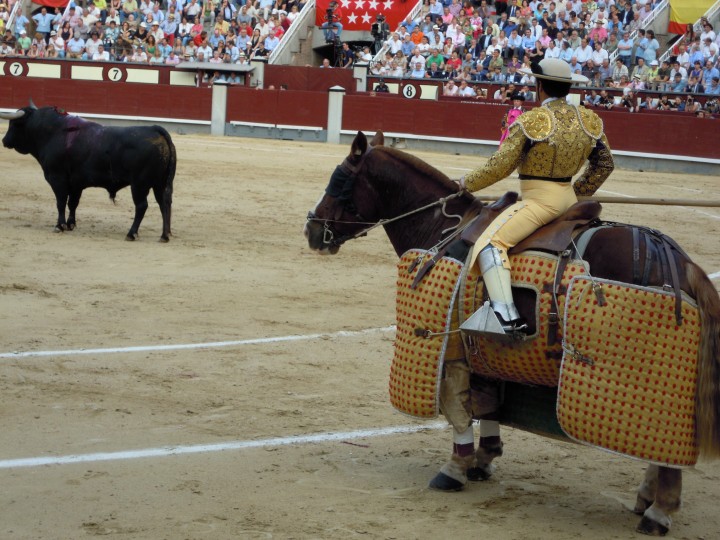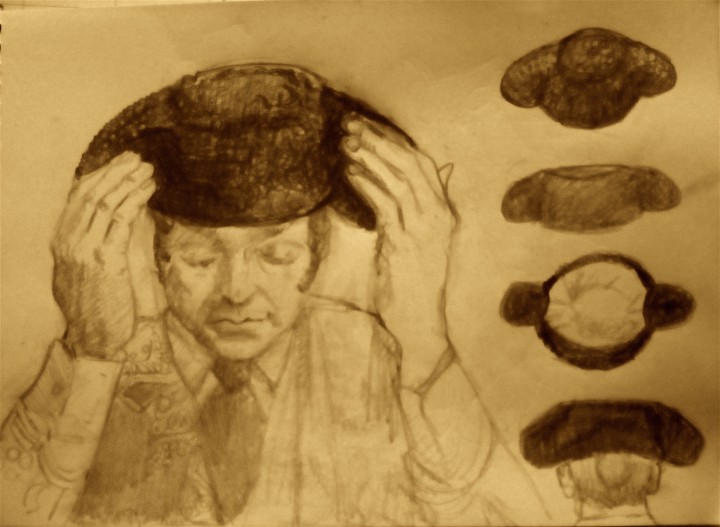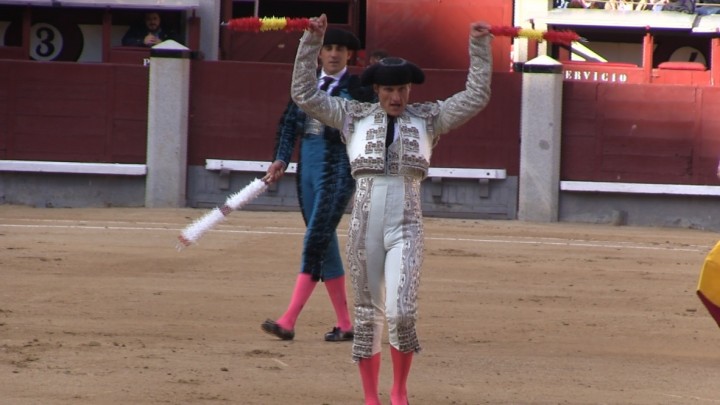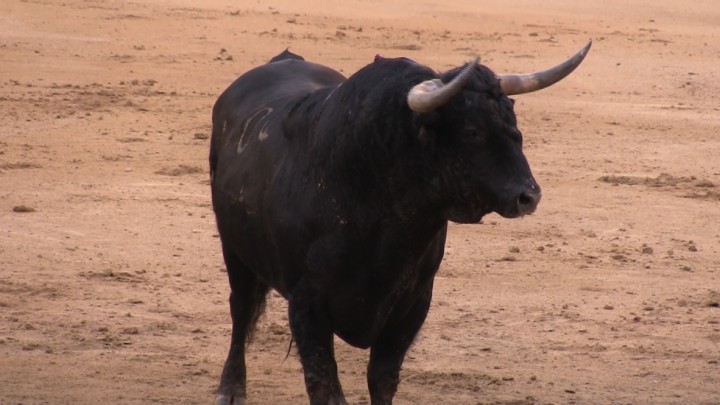The Suerte de muleta is fundamental to determine the triumph or failure of the bull ghter. It is in this phase that the bull ghter, facing the bull alone, must demonstrate his close and personal idea of
what it means to be a bull ghter. At the sound of the bugles and the drums, the bull ghter receives the red cape and the sword from the swordsman’s assistant.
If it is the bull ghter’s rst bull, he addresses the presidency to request the appropriate permission and after paying homage, or perhaps not, to the death of the animal, he goes to the bull.
The bull will be taken by the matador’s support team to the place selected by the bull ghter. From there, if the animal responds, he takes the bull into the middle of the ring, where a sense of solitude is even more pronounced.
“La Faena” is a collection of a series of connected steps the bull ghter makes, remaining still while the bull circles him. The bull ghter ́s intent, through the power of his cape and not because of the bull ́s natural erceness, is to make the animal charge. The most valued elements in this stage are the excitement of the bull ghter ́s execution of steps, together with the courage the bull displays to oppose dif culties. This ends with the “Suerte suprema”, and is followed with the killing

